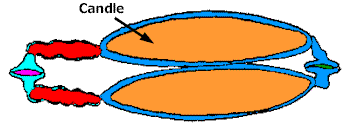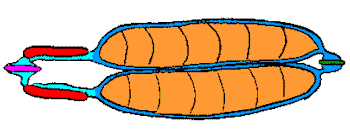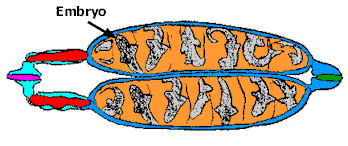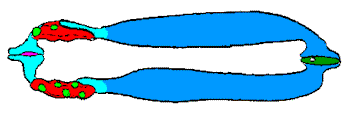|
[common/toc_r_resources.htm]
|
Standardized Maturity Stages for Live-Bearing Sharks
Determining the maturity state of sharks in the field is difficult.
The following summary is offered to help standardize observations and
reportage of gonadal maturity in ovoviviparous and viviparous sharks.
Once familiar with the stage categories proposed here, maturity state of
sharks examined in the field can be determined accurately and scored
quickly.
Males
Juvenile
- claspers undeveloped sticks
- gonads tiny, thread-like, and whitish
- sperm ducts straight
|
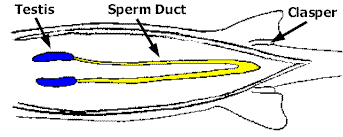 |
Subadult
- claspers formed but soft, flexible
- testes enlarged
- sperm ducts meandering
|
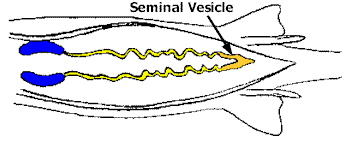 |
Adult
- claspers fully formed and stiff
- testes well rounded, reddish, and filled with flowing sperm
- sperm ducts tightly coiled
|
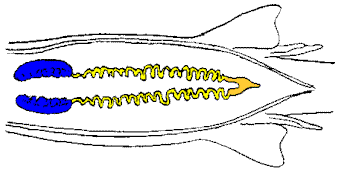 |
Active
- glans of claspers often dilated and swollen
- sperm flowing from cloacal papilla under pressure applied to belly
and/or present in clasper grooves
|
 |
Females
Ovarian Stages
Juvenile
- ovaries small, gelatinous or granulated
- eggs not yet differentiated or evenly small and granular
- uteri thread-shaped
|
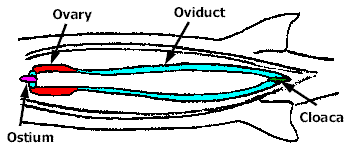 |
Ripening
- ovaries enlarged, walls transparent
- eggs differentiated to various sizes
- uteri thread-shaped
|
 |
Ripe
- ovaries large, well rounded
- eggs enlarged, all about the same size so that they can be counted
and measured easily
|
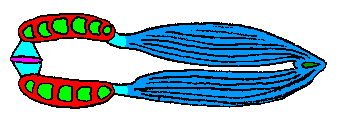 |
Uterine Stages
|







